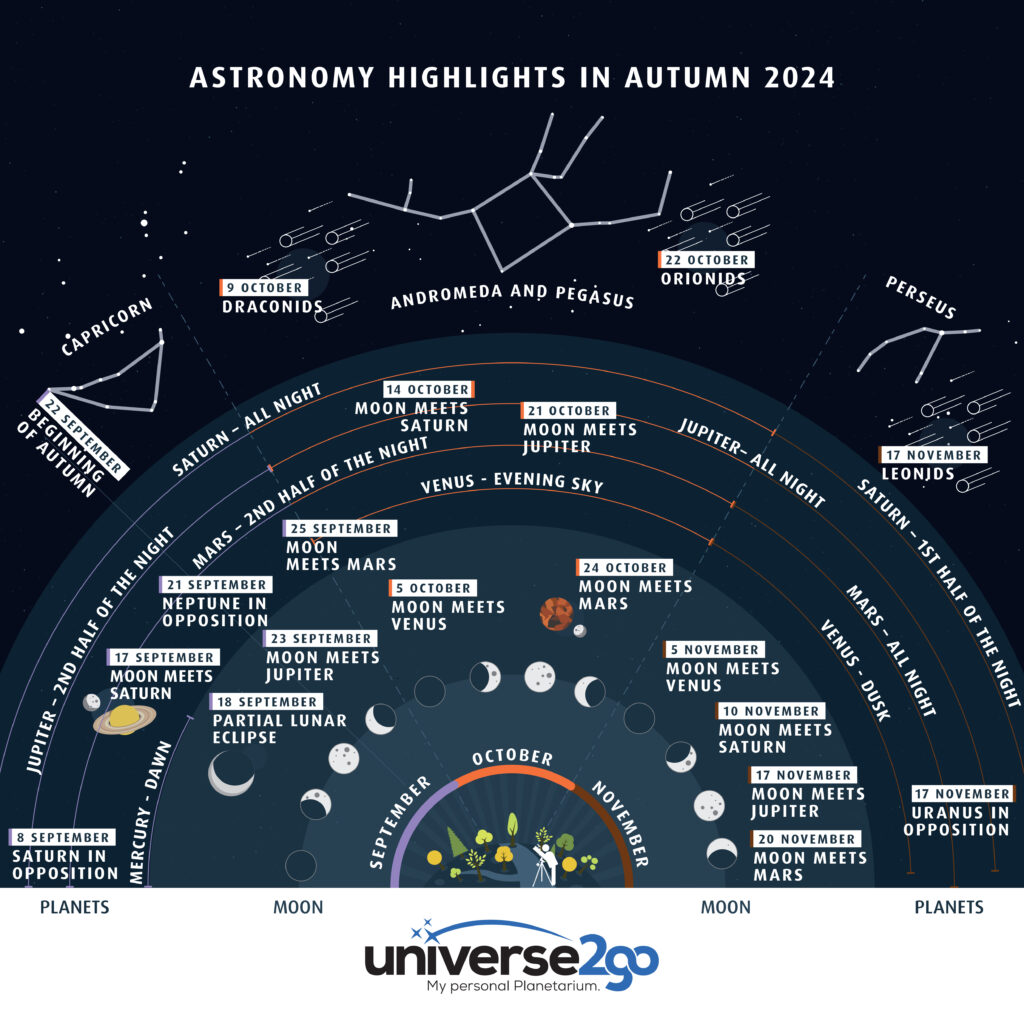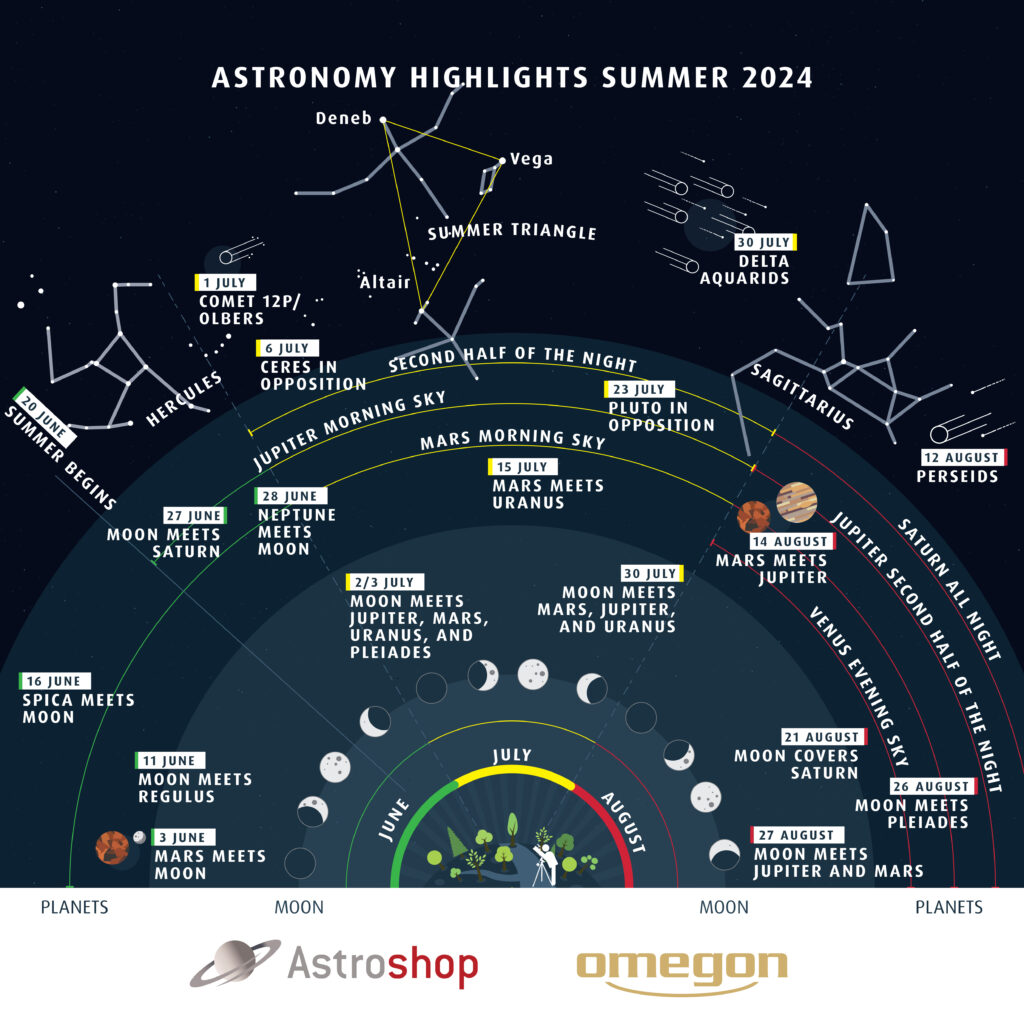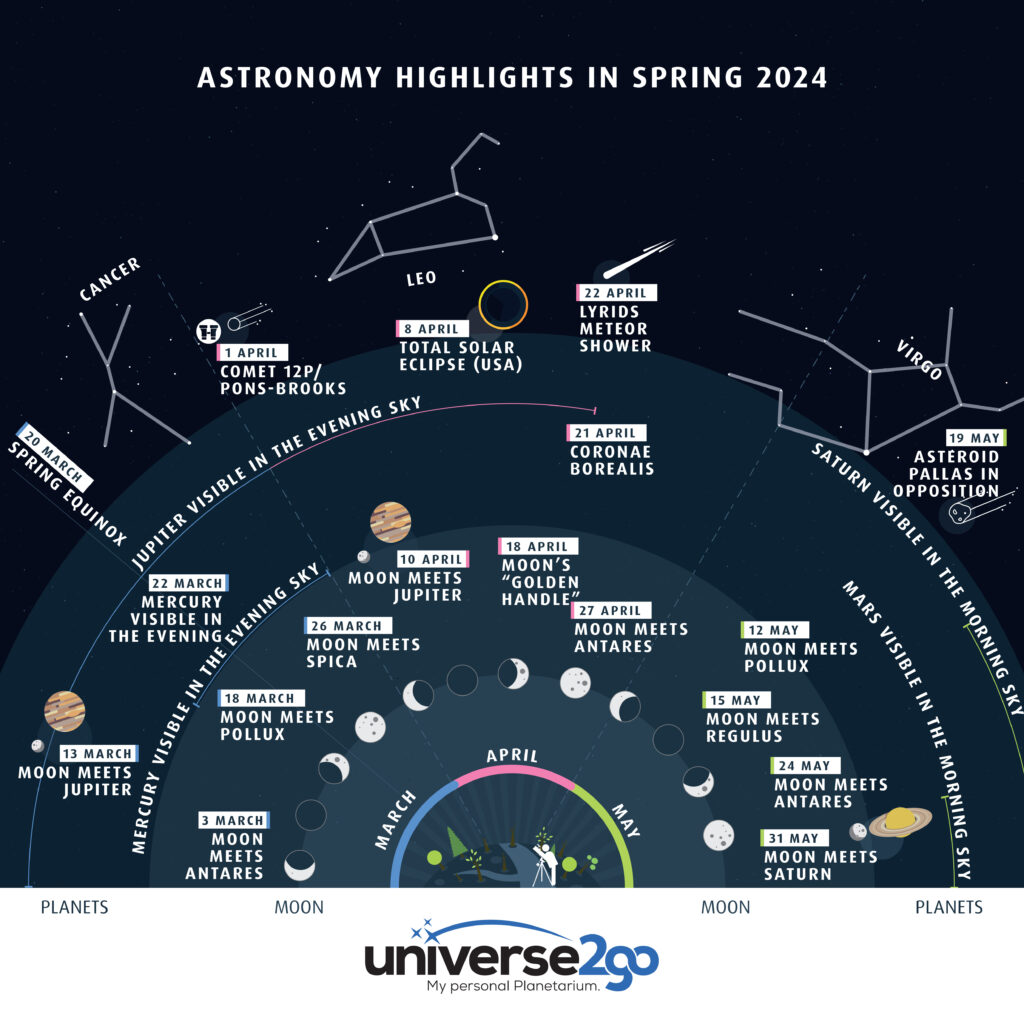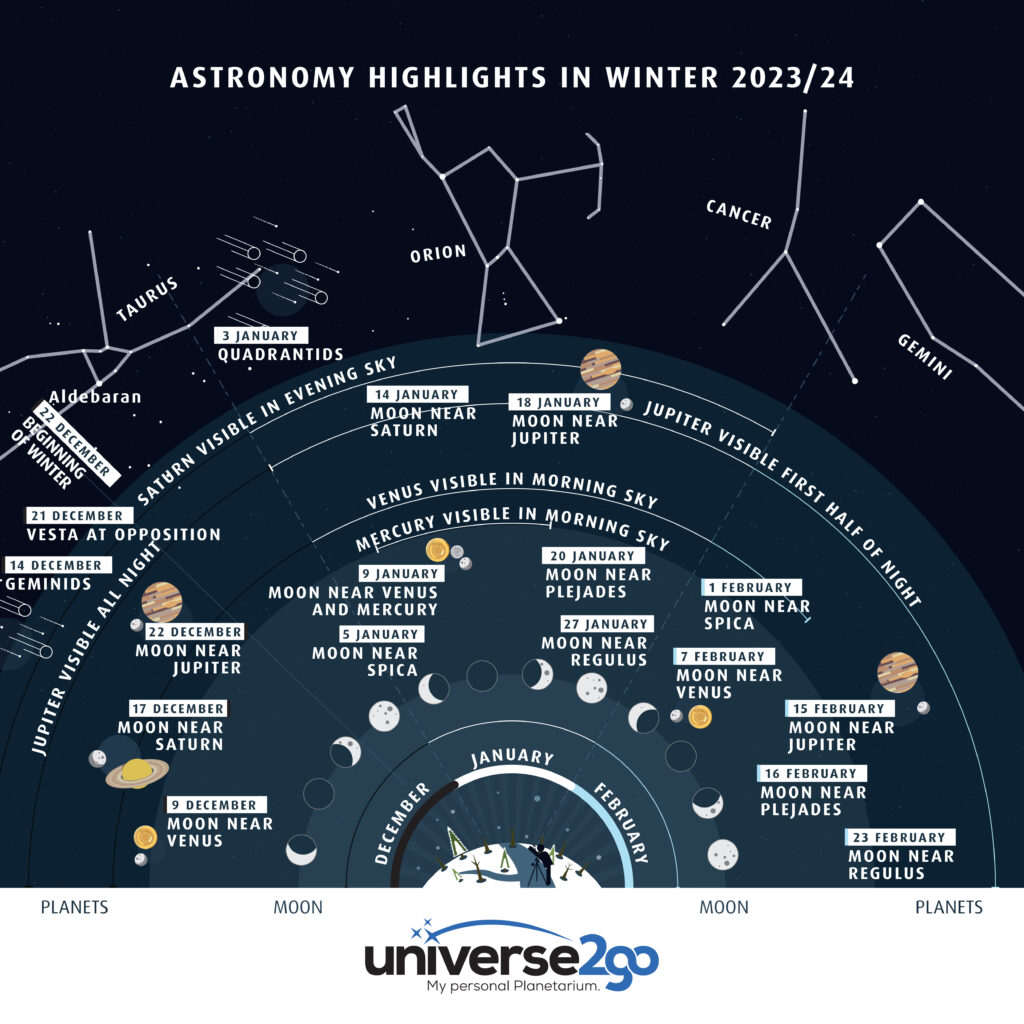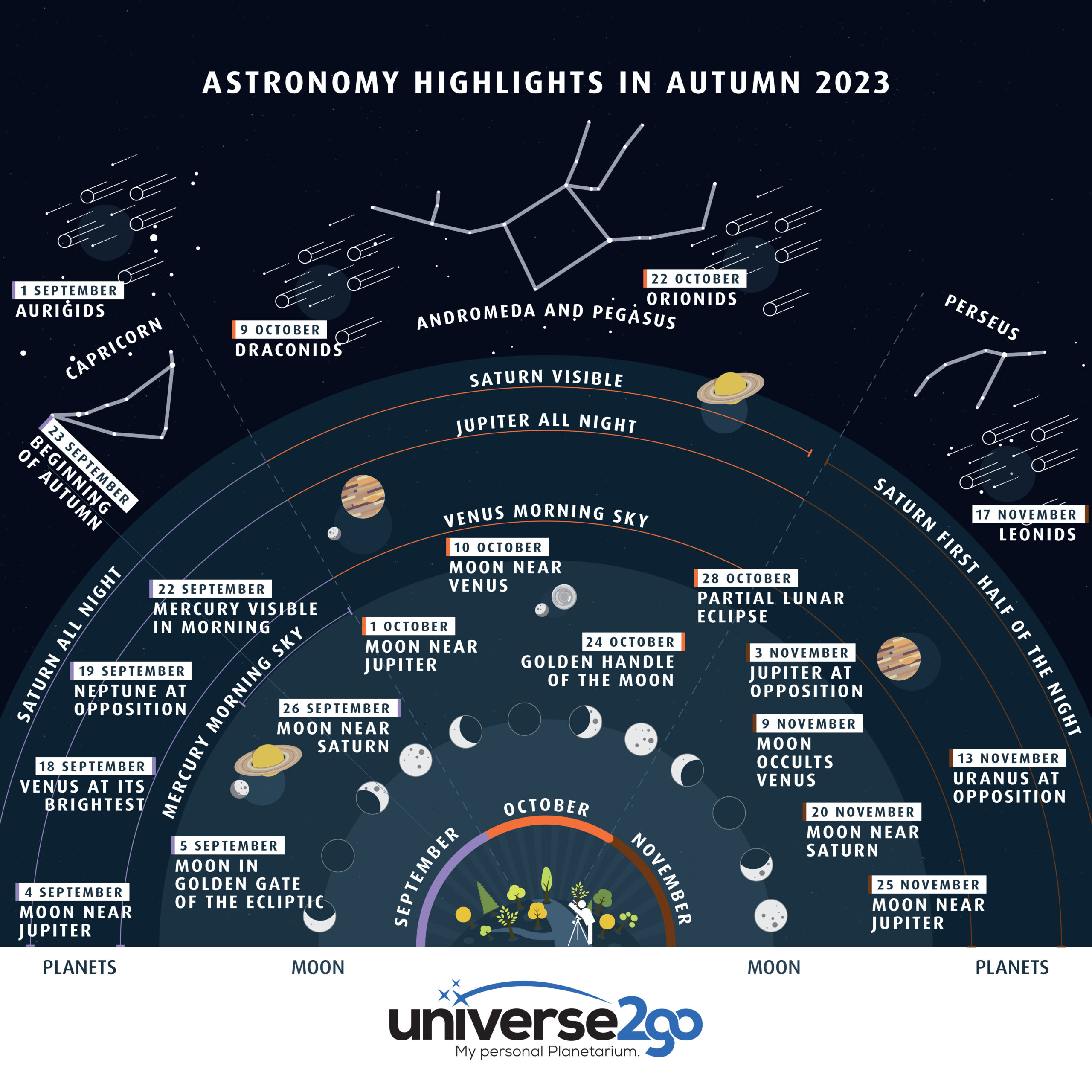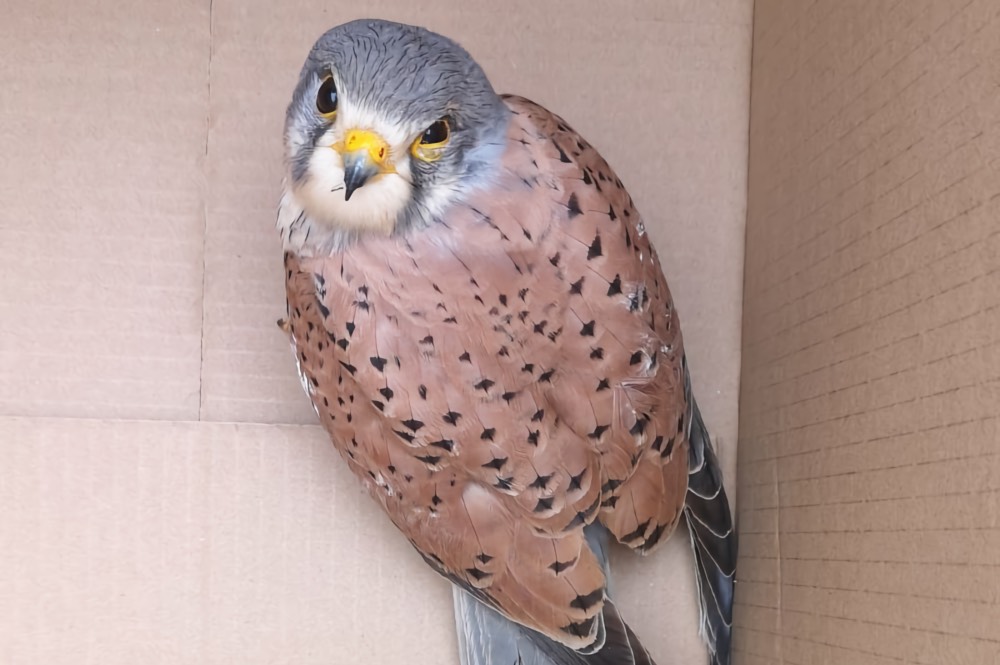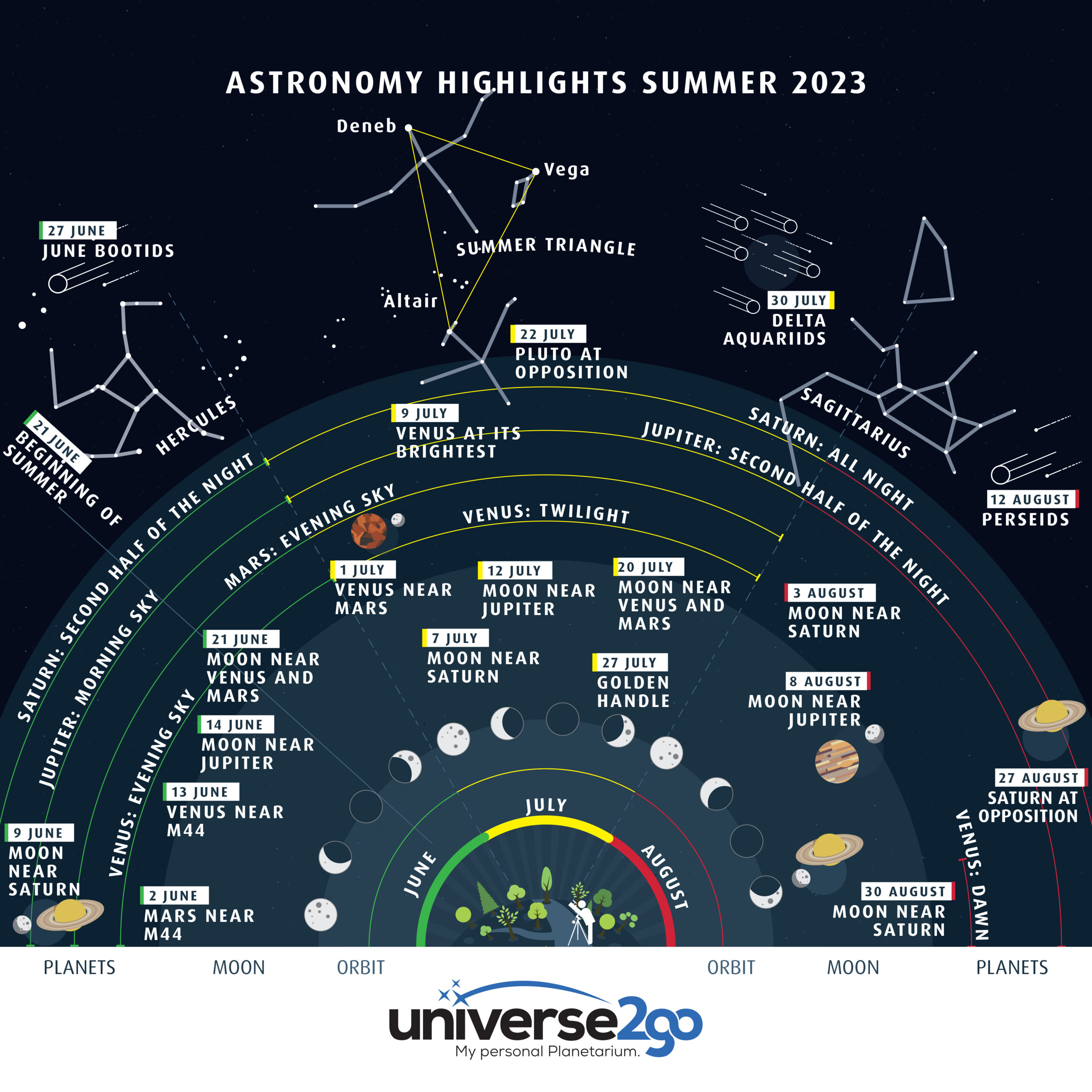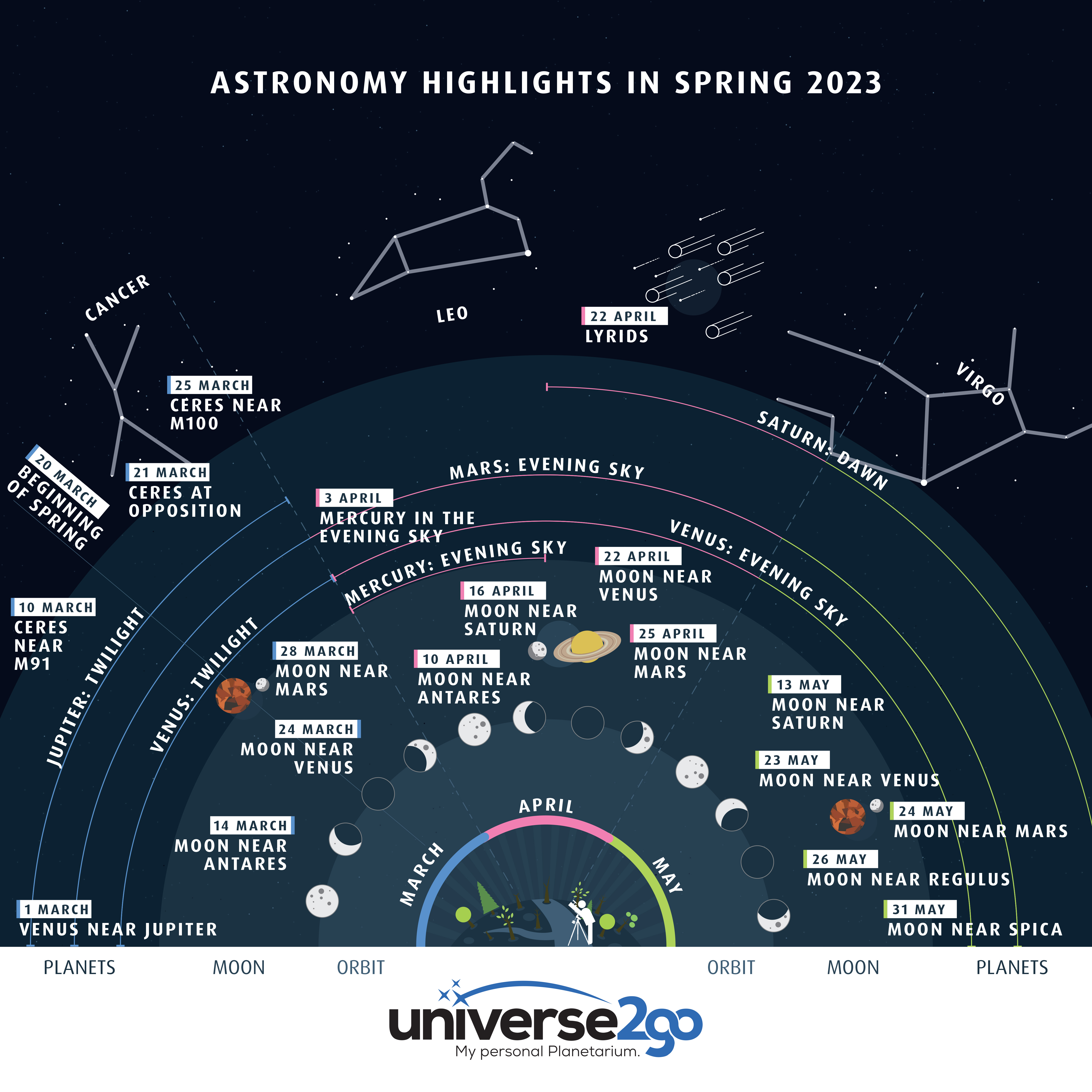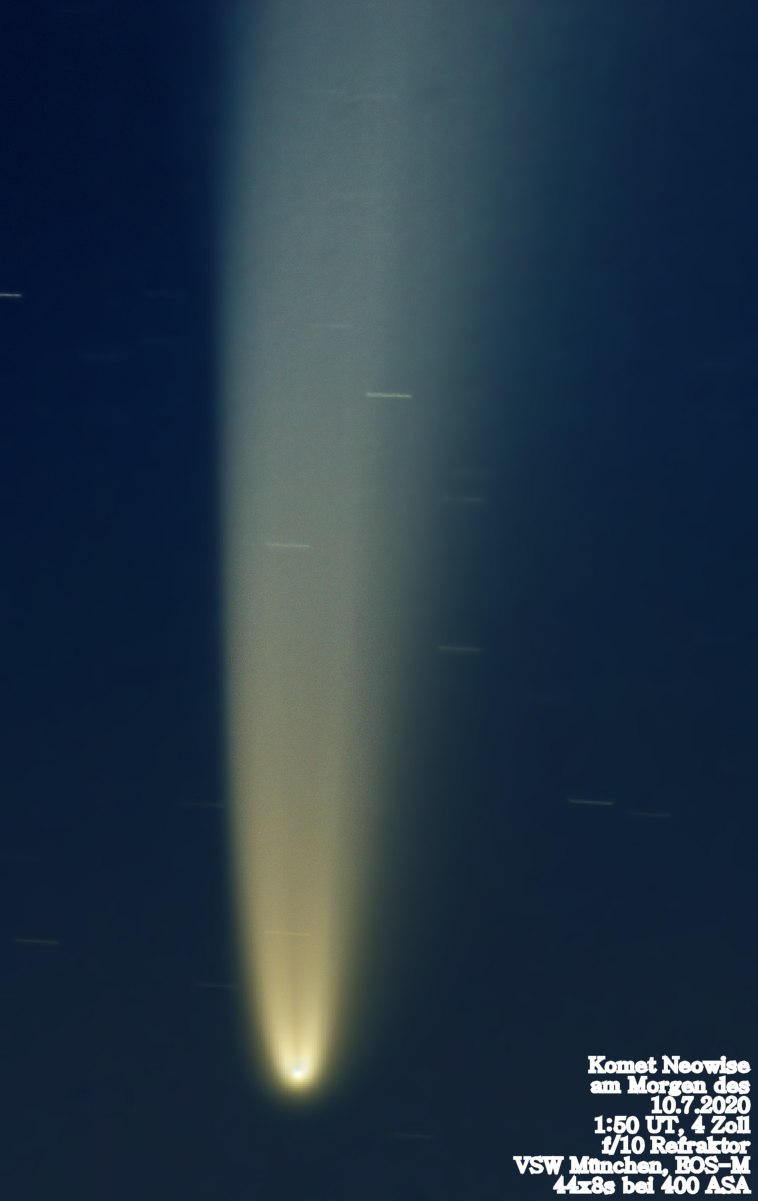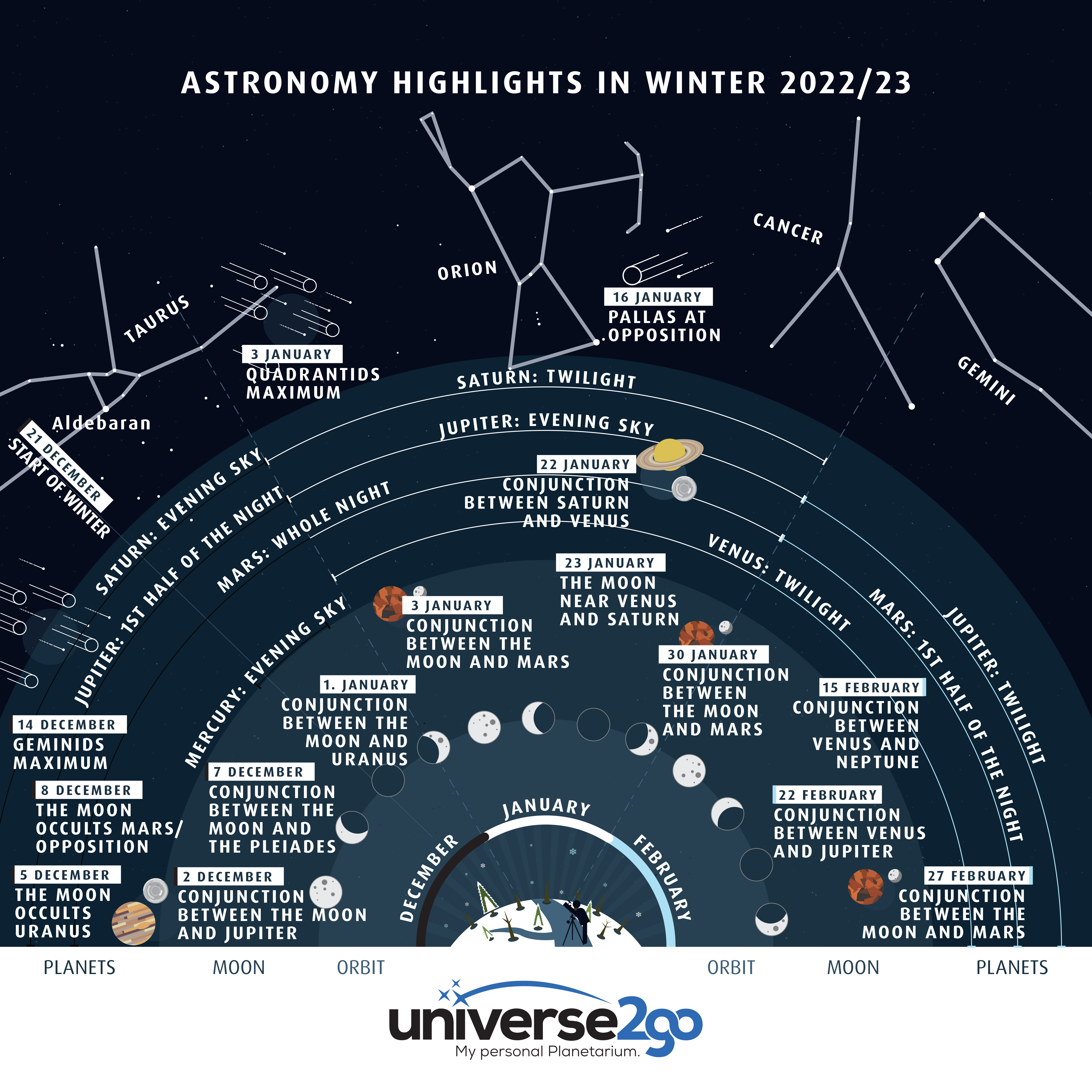From encounters with famous planets – thereof two oppositions – up to nights with beautiful meteor showers: The starry fall sky from September to November offers fascinating views for all stargazers.
In the current infographic “Astro Highlights in Autumn 2024” we have compiled the most beautiful of these celestial events.
You are welcome to use the graphic on our website (with a link to www.astroshop.eu) and inform your visitors about upcoming exciting events.
September:
8.9. Saturn in opposition
Saturn is in opposition to the Sun and reaches its best visibility. It can be seen all night long and shines with a brightness of 0.5 magnitudes. It is as bright as the brightest stars in the sky, but is easily recognizable by its yellowish color and steady glow. The ringed planet will reach its highest position – the meridian – only after midnight, making it particularly good to behold in telescopes. Its currently present narrow ring opening is striking, which will continue to diminish until Saturn reaches its edge-on position to Earth in March of next year. This however will not be visible to us because the ringed planet will then be in conjunction with the Sun.
17.9. Moon and Saturn
On September 17th, at 19:15 CEST, we expect a beautiful celestial spectacle: The rising full Moon meets the planet Saturn. The bright Moon and the comparatively weaker Saturn will appear in the evening sky about 5.5 degrees apart. Saturn, which was in opposition to the Sun on September 8th, remains well visible.
18.9. Partial Lunar Eclipse
During the night of September 18th we will experience a glimpse of Earth’s shadow: A partial lunar eclipse. Early birds can perceive the first shadow on the Moon at 4:12am CEST, approaching from the northwest. The maximum coverage of just under 10 percent will be reached around 4:45am CEST. The Moon will finally emerge completely from the Earth’s umbra at 5:18am CEST. Although this is just a minor eclipse, it is a must for all amateur astronomers – keep your telescopes and binoculars ready.
21.9. Neptune in Opposition
On September 21st Neptune reaches its opposition and shines with a brightness of 7.8 mag in the night sky. The planet is visible all night long and can be observed with both telescopes and binoculars. Neptune shows a distinct disc size and a characteristic color appearance in the eyepiece, that clearly distinguishes it from the surrounding stars. Definitely an exciting target for all amateur astronomers.
23.9. Moon meets Jupiter
Just after midnight on September 23rd we can observe the Moon and Jupiter in the constellation of Taurus. Both celestial bodies are about 6 degrees apart. At dawn they will gradually dissipate through the incoming sunlight.
25.9. Moon meets Mars
During the night of September 25th we can once again observe an encounter between the Moon and Mars. The Moon begins its journey over the Eastern horizon, followed shortly by the Red Planet.
October:
5.10. Moon meets Venus
On October 5th you can observe an interesting celestial event on the western horizon: Venus as the evening star meets the crescent Moon. This encounter will be clearly visible in the evening.
9.10. Draconid Meteor Shower
The Draconid meteor shower peaks on October 9th. Meteors of this shower originate from the constellation of Draco, which is located above the Big Dipper. The activity of these shooting stars can vary greatly, so it is recommended to watch out for the Draconids also several days before and after October 9th.
14.10. Moon meets Saturn
In the evening of October 14th a beautiful conjunction between the Moon and Saturn will appear. Saturn, which was in opposition to the Sun last month, still remains visible all night long. During this time Saturn appears particularly bright and prominent, making it an impressive sight in the night sky. The proximity to the Moon enhances the visual impact and offers amateur astronomers a wonderful opportunity for observations.
21.10. Moon meets Jupiter
During this special night you will experience a close encounter between the Moon and Jupiter in the sky, only about 9.5 degrees apart. Both celestial bodies appear amidst a dense field of bright stars, including Capella, Aldebaran and Betelgeuse.
Capella, the brightest star in the constellation of Auriga, shines intensely and has fascinated observers for centuries. Aldebaran, the reddish giant in the constellation of Taurus, marks the prominent eye of the bull. Betelgeuse, a red supergiant in the constellation of Orion, is one of the largest and brightest known stars.
22.10. Orionid Meteor Shower
On October 22nd we expect a night of shooting stars: The Orionids will spawn about 25 to 30 meteors per hour across the night sky. However, their number can vary greatly from year to year. In order to have the best chances for a clear view, observers should use the early morning hours.
The Orionids originate from the famous Halley’s Comet. When Earth passes through the remnants of the comet’s tail, this annual celestial event occurs. The meteors seem to come from the constellation of Orion, which stands out in the southeastern sky during the morning hours. Unfortunately, the Moon will interfere with the observation this year.
A deck chair or a blanket can be helpful for comfortably looking up at the sky. Warm clothing and hot drinks provide additional comfort during an observation in these chilly morning hours.
24.10. Moon meets Mars
On October 24th there is the opportunity to follow the Moon and Mars almost horizontally side by side in the night sky. These two celestial bodies appear together for a short time, offering a picturesque spectacle.
Mars appears as a bright red dot, contrasting with the silver glow of the Moon’s surface. Together they move slowly across the sky and set as a tandem around 23:00pm CEST. Mars will become brighter and its disc diameter will steadily increase, until it reaches a size of 14 arcseconds during its opposition in January.
November:
5.11. Moon meets Venus
Venus is currently our evening star, but sets before 19:00pm CEST. On November 5th we can admire the slim crescent Moon together with the brightly shining Venus. The young crescent Moon is only four days old and thus only illuminated by 16 percent. A very aesthetic experience.
10.11. Moon meets Saturn
Saturn and the Moon appear together on November 10th at about 5 degrees apart in the constellation of Aquarius, offering a beautiful view in the night sky.
17.11. Uranus in Opposition
Uranus reaches its opposition and presents itself with a visual brightness of 5.6 mag. Theoretically it could be seen with the naked eye, but in practice it is recommended to use binoculars or a telescope for a clear view.
To locate it it is best to use a star chart to approach it. In the telescope Uranus then appears as a small, sharply outlined disc with a slightly greenish hue. This event offers you the best chance to observe the seventh planet of our solar system.
17.11. Moon meets Jupiter
Shortly after dusk we can see the Moon and Jupiter rise above the horizon. They are framed by the constellations Auriga and Taurus, which contain the bright stars Capella and Aldebaran. A little higher above we see the famous Pleiades star cluster.
17.11. Leonid Meteor Shower
In the night of November 16th to 17th the Leonids reach their peak, offering an impressive celestial event with up to 20 meteors per hour. This event is a must for meteor fans!
The Leonids owe their name to the constellation of Leo, from which they seem to originate. The true origin of this meteor shower lies in the comet Tempel-Tuttle and its particles cause these meteor showers every year. Particularly remarkable: Every 33 years, the meteor shower intensifies into a real meteor storm, producing far more than 20 meteors per hour – sometimes even up to several hundreds per hour!
20.11. Moon meets Mars
The last significant celestial event in November is the conjunction between the Moon and the planet Mars. During this night the Moon passes by the planet Mars and continues towards the constellation of Cancer near the beautiful M44 star cluster, which is also known as the “Beehive Cluster”.
For sky watchers this event offers an opportunity to see several objects simultaneously. The red planet Mars, the Moon and the prominent M44 star cluster, which you can easily spot already with a small pair of binoculars.

